MUSHROOMS IN THE ANCIENT CITY
Two weeks ago, I published here a post titled IN THE WOODS AROUND NESACTIUM. The ancient city of Nesactium was only mentioned in the title of that post. All you could see there were some fungi and insects found in the dense forest around it.
This time I encountered a group of mushrooms right in the place where once stood a capital of the people called Histri, and then after the Roman conquest of this area, one of the many fortified towns of the empire.
The mushrooms I found today are fairly big, pretty robust, and elegant at the same time.
Some of these lovely mushrooms had formed a half-ring on the lawn of the archeological park.
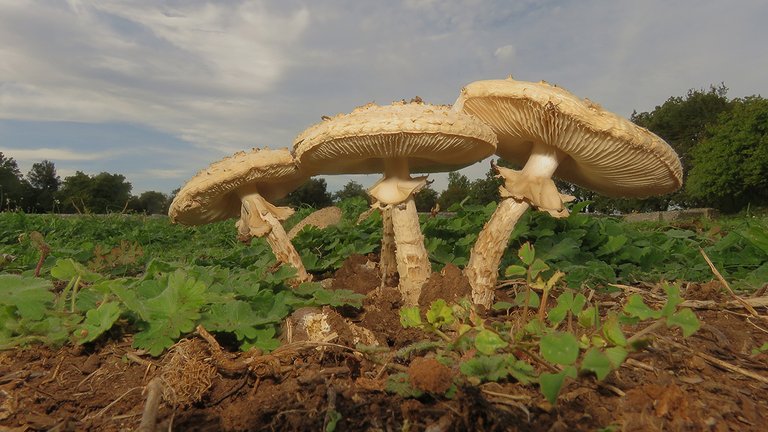
You'll see only one species in this contribution to FungiFriday by @ewkaw - the Amanita strobiliformis.
I mean, you'll see only one mushroom species. When it comes to insects, you'll see a bit more.
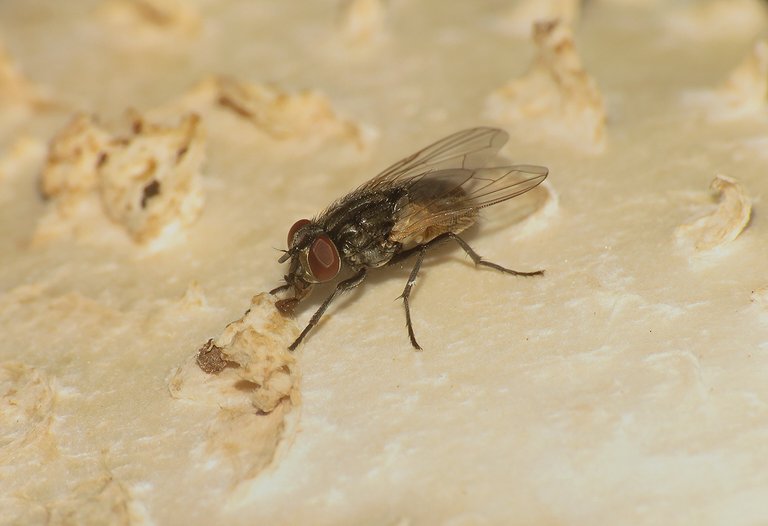
This fly, ad example, has landed on the top of the cap.
It's a very common housefly (Musca domestica) a species from the Muscidae family. If you enlarge the photograph by clicking on it, you'll see that the fly's mouthparts are exposed and projected outwards. The insect is feeding on some liquid stuff on the cap's surface.
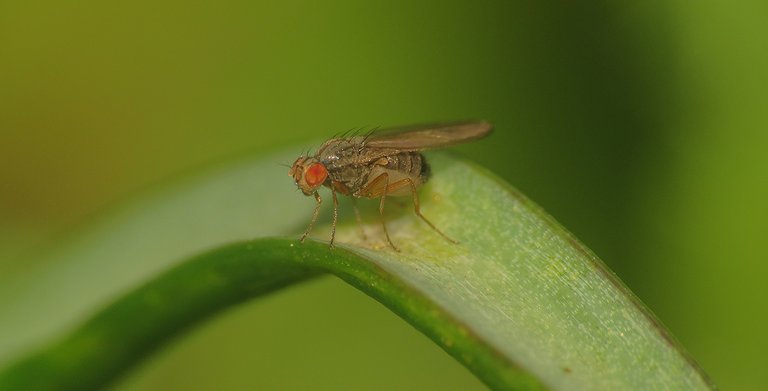
On the vegetation around the mushroom, I noticed a much smaller fly.
The minuscule Scaptomyza pallida. A species from the Drosophilidae family.

While photographing a group of amanitas nicely mixed with daisies ...
... I noticed an even smaller, mosquito-like fly. This is a fungus gnat. Can't tell you which one exactly. Quite a few species from six different families in the superfamily Sciaroidea are commonly known as fungus gnats.
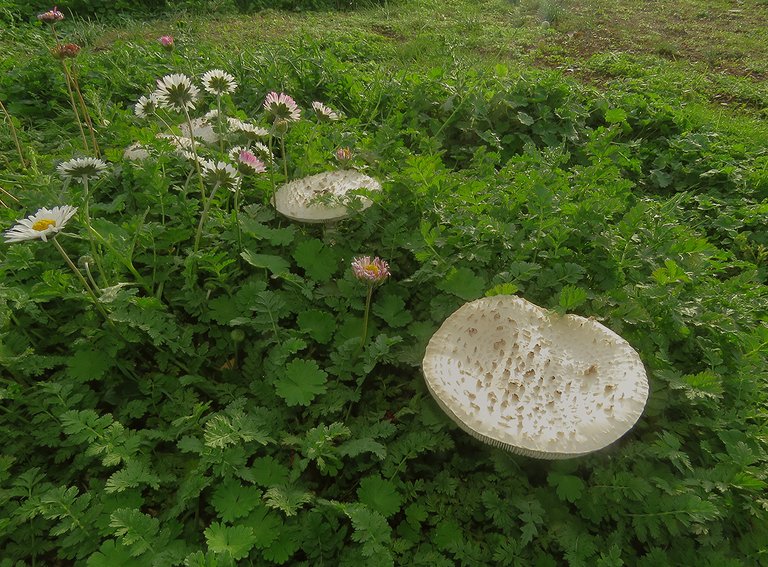
Here you can see the same mushrooms from a different point of view, and in the following photograph ...
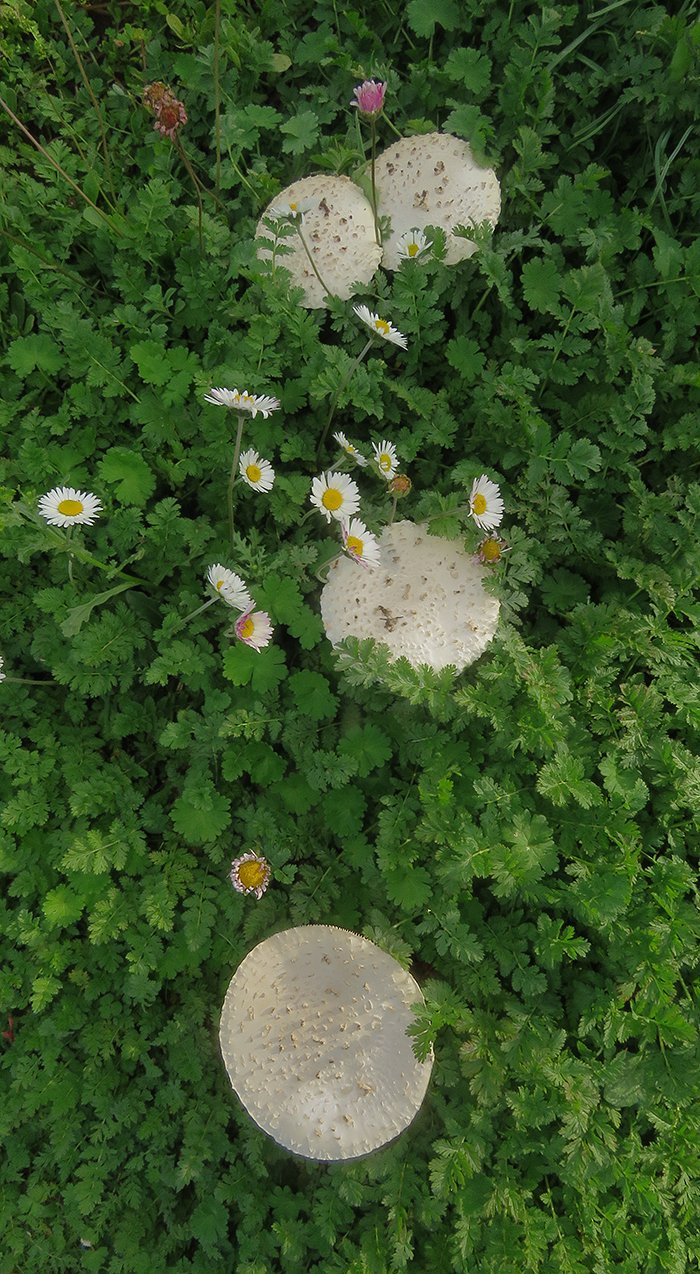
... you can take another look at the same thing. From above, this time.
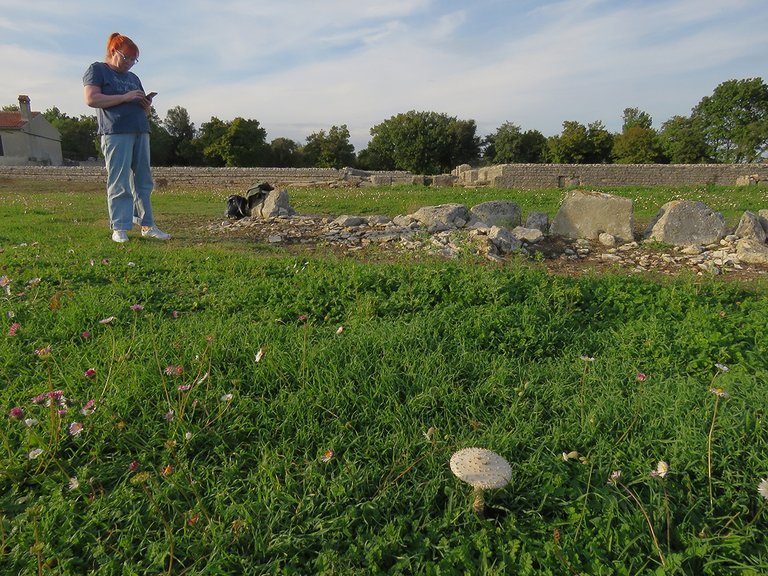
In this photograph, besides seeing a friend that was there with me, you can also see a bit more of the archeological stuff. Scattered stones. Reconstructed walls. Stuff like that.
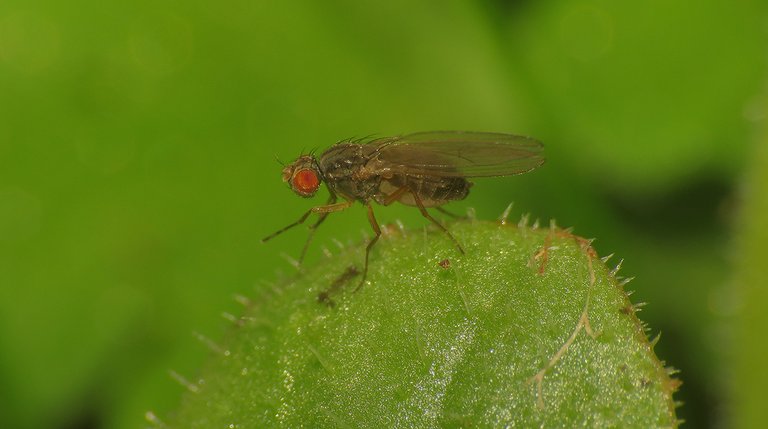
Scaptomyza pallida flies were very numerous on the lawn. This one was cleaning its legs. In this specific photograph, the forelegs. In the following triptych ...
... you can see the Scaptomyza pallida cleaning its hindlegs.
Here, the fly was cleaning its flying apparatus and the flash of my camera created some beautiful colors on the translucent surface of the elegant wing. With the following photograph ...
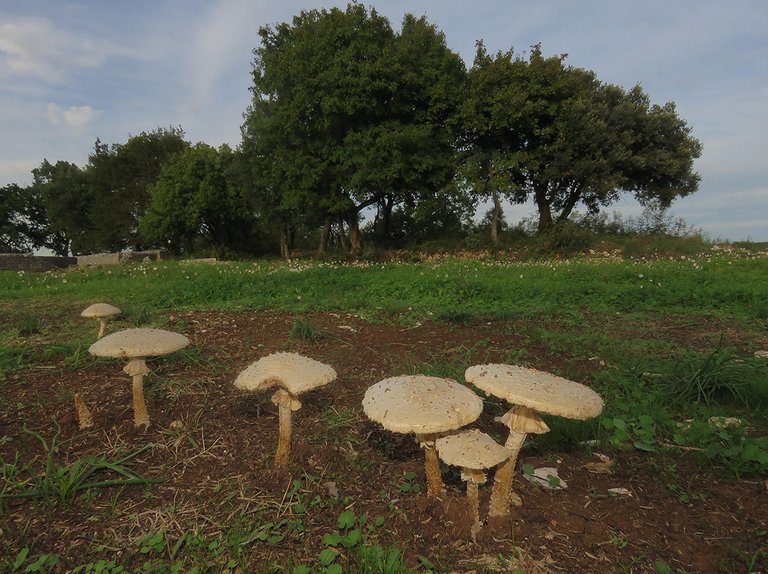
... the focus is on the mushrooms again.
Amanita strobiliformis grows in a symbiotic relationship with various deciduous trees. Its Wikipedia page states that this species prefers scattered forests or, like in the case of Amanitas shown in this post, woodland borders. The remains of the ancient city are surrounded by woods.
This meaty amanita is edible, but I never tried it. Some sources say that the outer skin of the cap has to be removed. A couple of sources state that the species has some compounds that make it hallucinogenic.
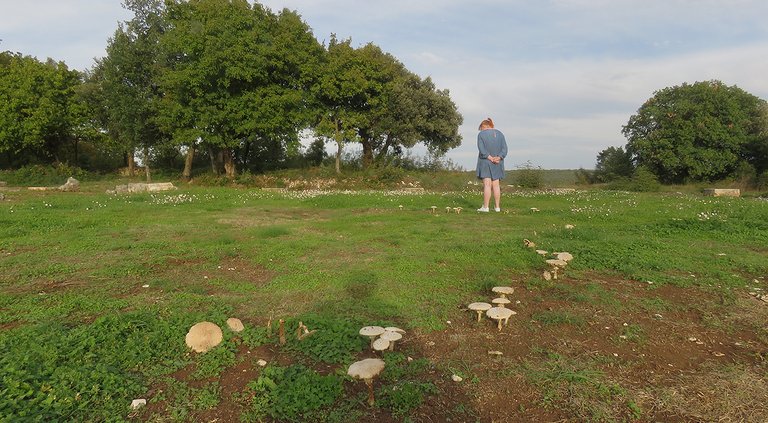
I think that fruiting bodies of the Amanita strobiliformis sometimes grow in large groups that form rings. I'm not sure about that because I didn't find that information in my Internet sources, but since I found a nicely shaped half-ring today, I'll say that this is certainly the case. Sometimes, at least.
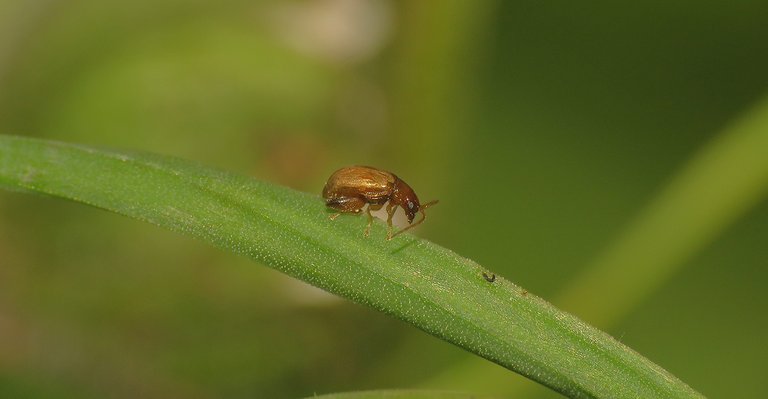
Here you can see another insect that I found on the green plants in between the mushrooms.
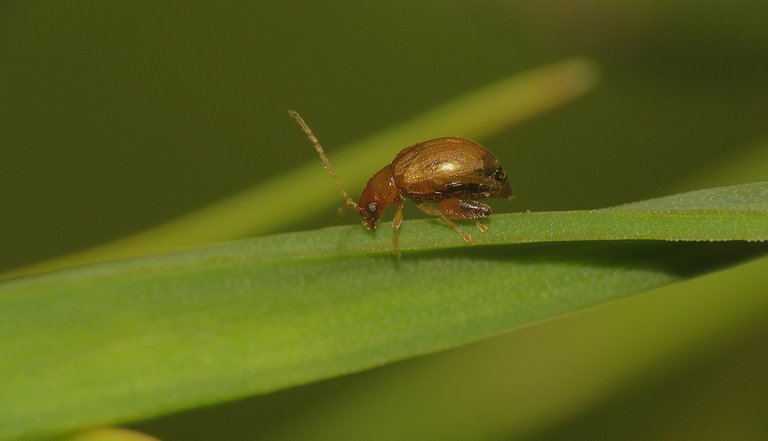
It's not a fly, for a change.
This is a flea beetle from the genus Longitarsus of the Chrysomelidae family.
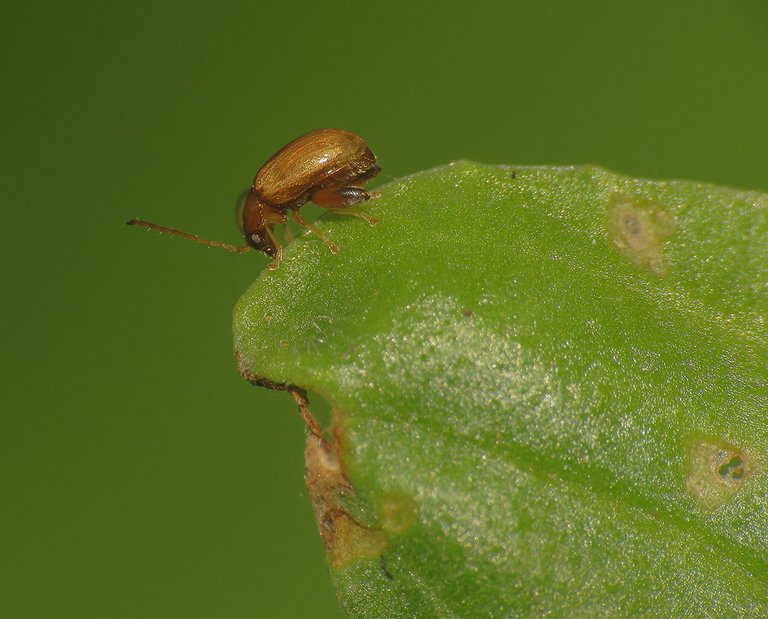
With quite a few similar Longitarsus species present in the area, I can't tell you which one exactly is this. It could be the Longitarsus membranaceus. Or the Longitarsus exsoletus, maybe.
I'm not completely sure, but I think that this was my first encounter with the Amanita strobiliformis. Maybe I saw it before without recognizing the species. Anyway, never before did I explore these mushrooms thoroughly like today.
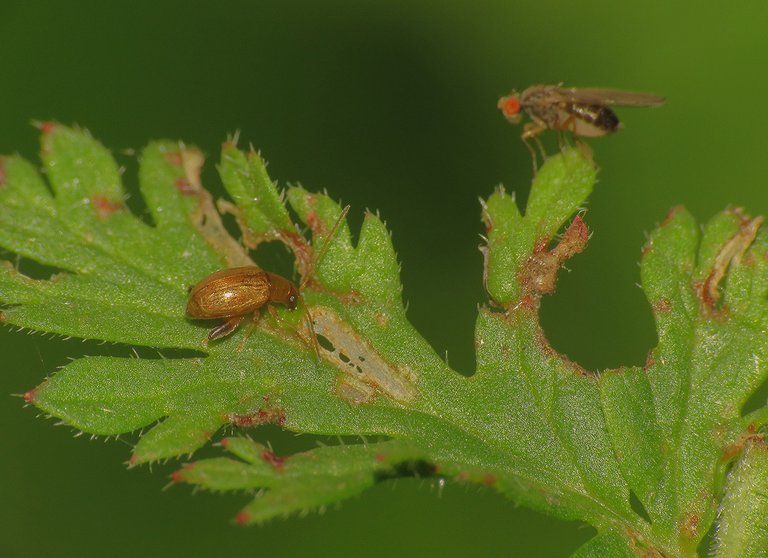
Here you can see the beetle and the fly near each other, on the same plant.
The flea beetle was feeding on the plant ...
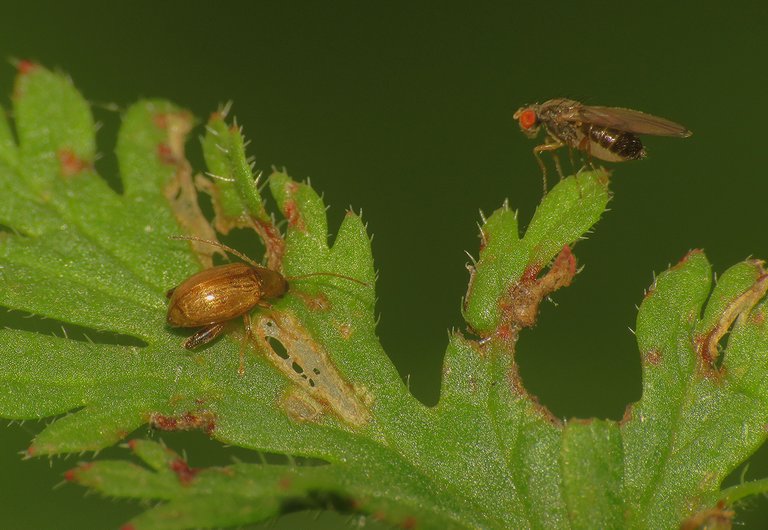
... while the Scaptomyza pallida was just resting.
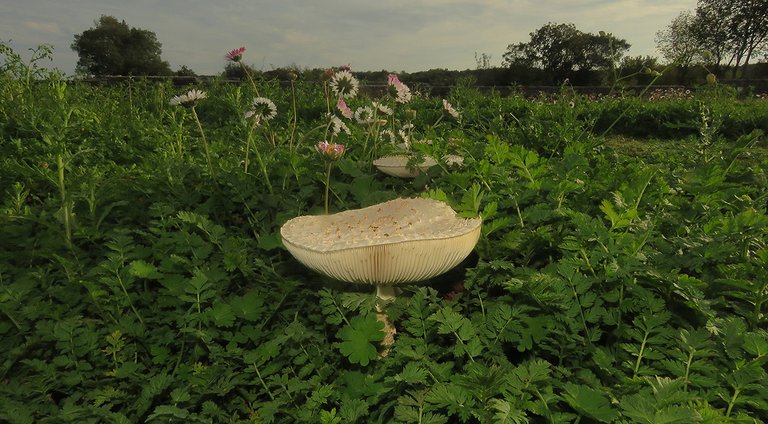
And that's it. I showed you all I collected with my camera today.
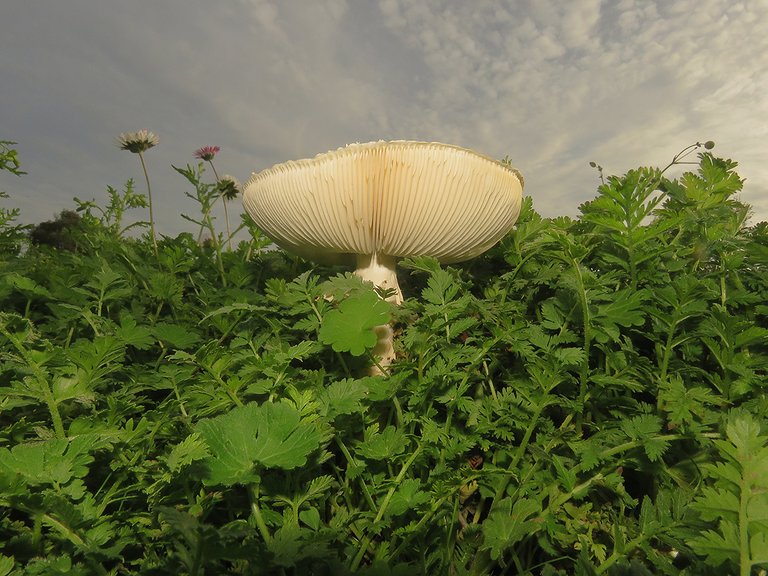
The following links will take you to the sites with more information about some of the protagonists of this post. I found some stuff about them there.
https://www.first-nature.com/fungi/amanita-strobiliformis.php
https://champignouf.com/
https://www.google.com/search?q=Scaptomyza+pallida&sxsrf=ALiCzsYvvjLOiS0Cr9ICF8VPjlOmslRHgA:1666368435973&source=lnms&tbm=isch&sa=X&ved=2ahUKEwj0msOV2vH6AhWvhf0HHXncB3UQ_AUoAXoECAMQAw&biw=1549&bih=917&dpr=1
https://en.wikipedia.org/wiki/Longitarsus
https://en.wikipedia.org/wiki/Sciaroidea
https://en.wikipedia.org/wiki/Housefly
AS ALWAYS HERE ON HIVE, THE PHOTOGRAPHS ARE MY WORK.
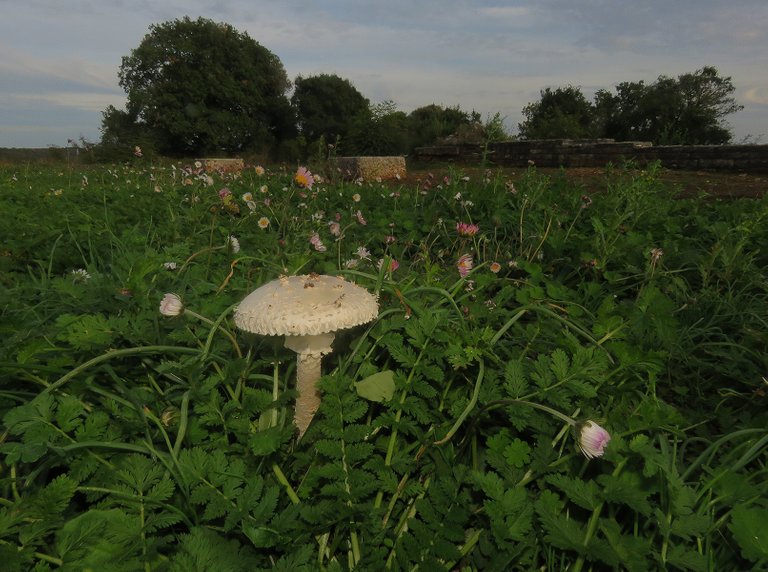
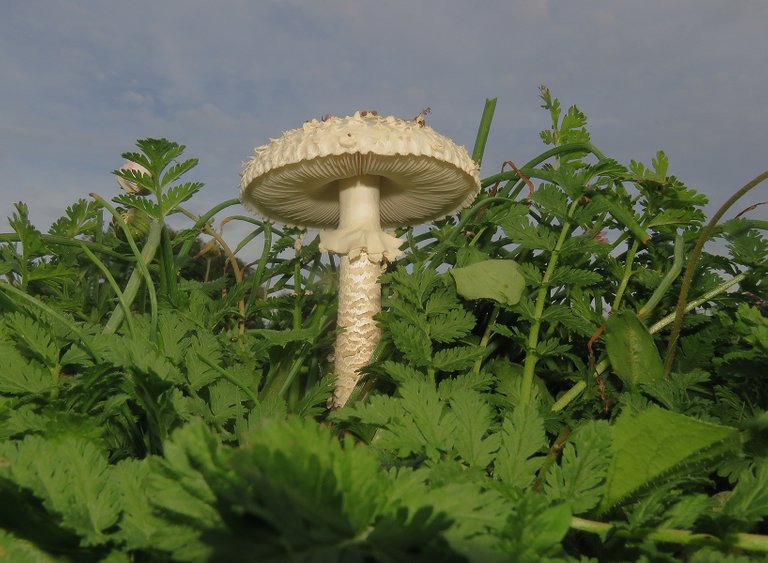
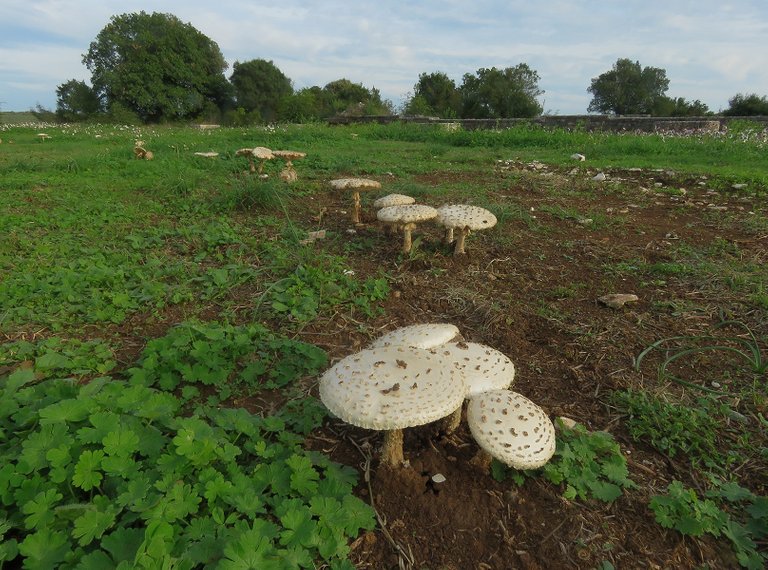
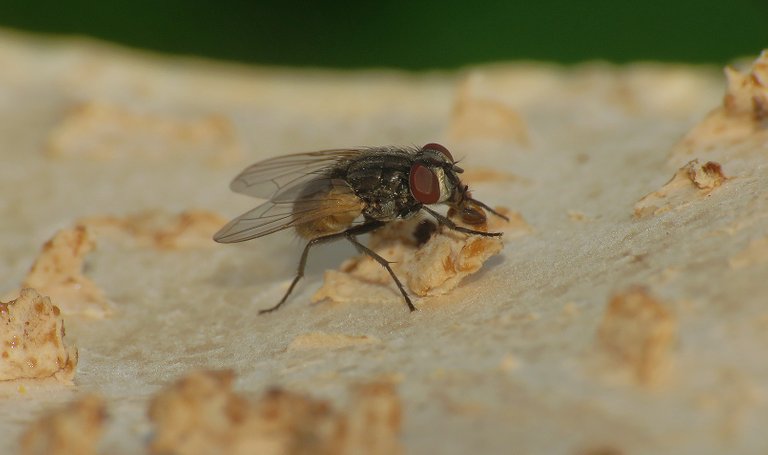
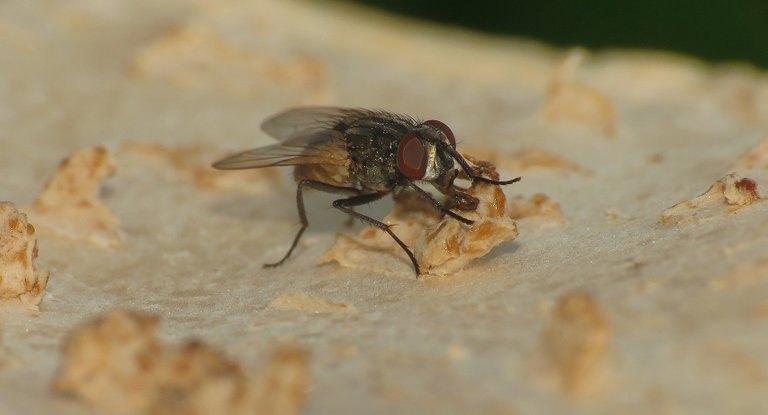
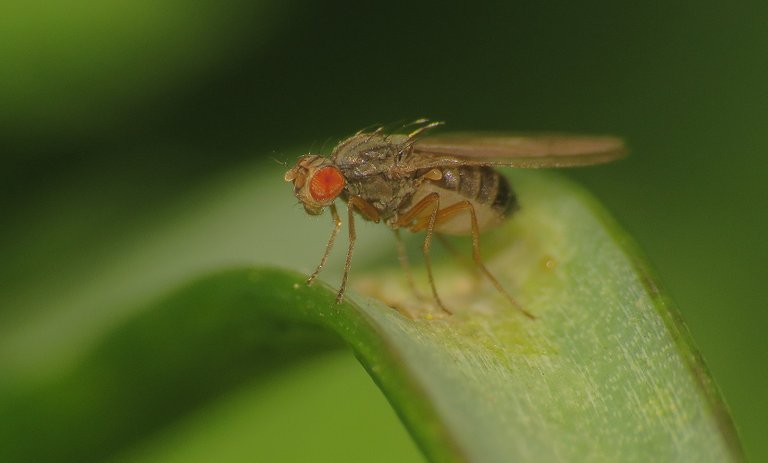
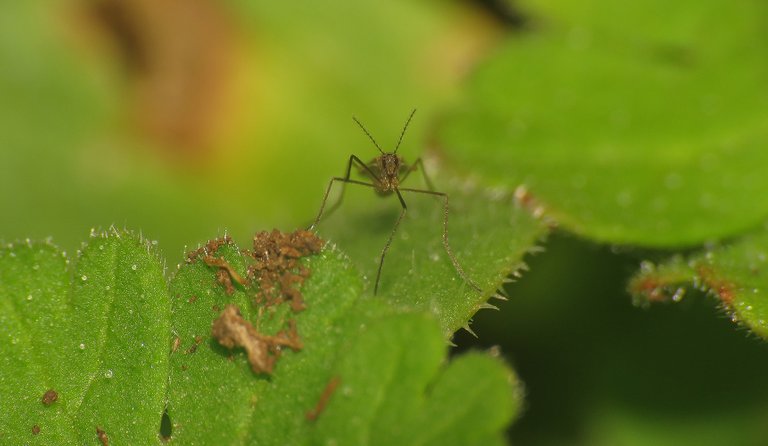



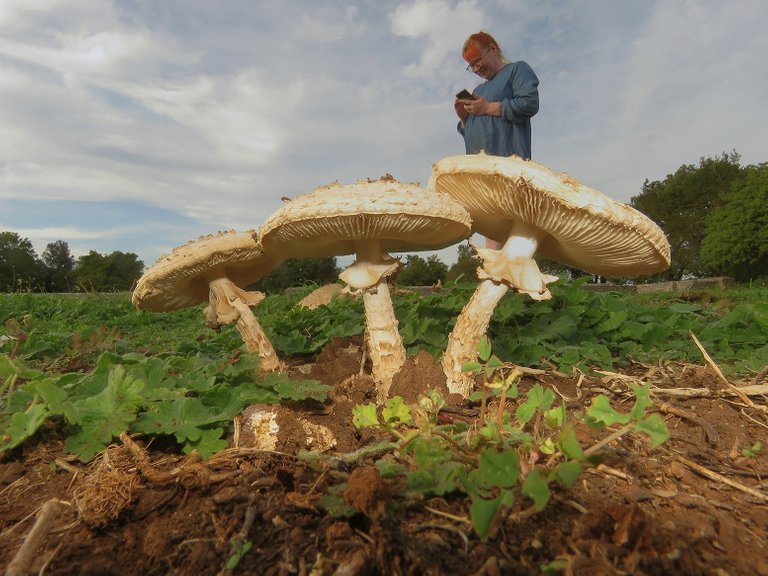
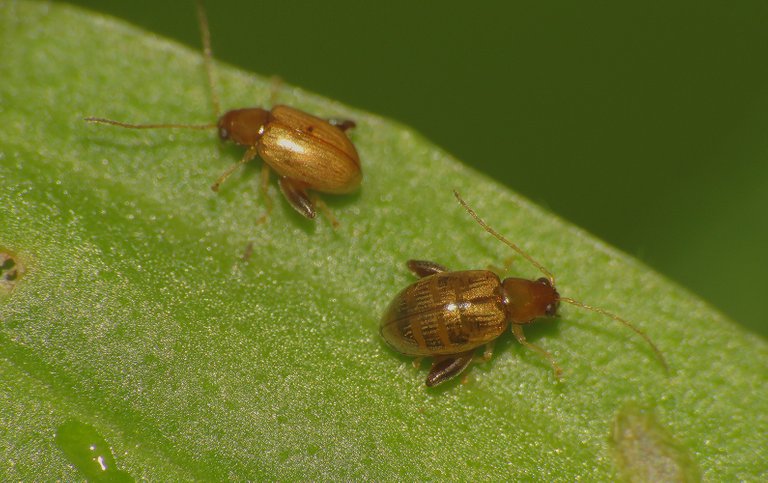
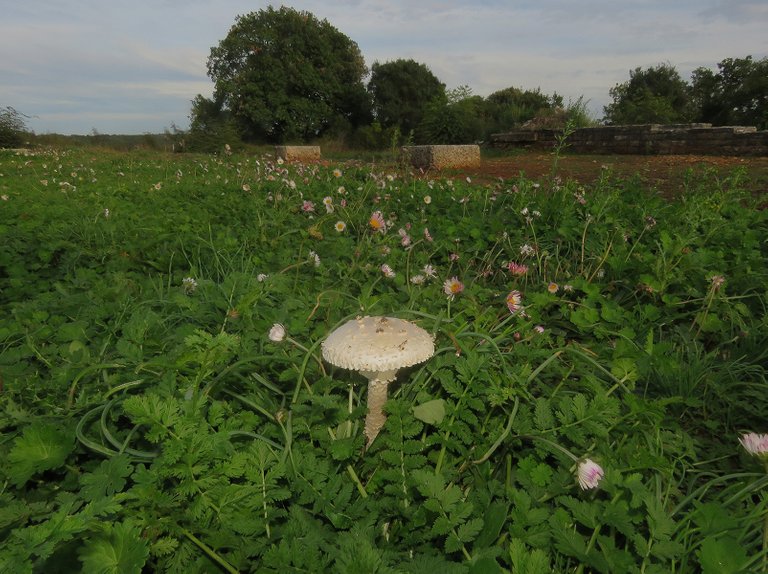

That's a lot of mushrooms 🍄
Some of those are impressive too. I like the photo angles. Some make them look like stange tall buildings. Cool!
Those are the smurfs towers. 😃
Haha yeah exactly 💯 🤣
Thank you for your witness vote!
Have a !BEER on me!
To Opt-Out of my witness beer program just comment STOP below
View or trade
BEER.Hey @borjan, here is a little bit of
BEERfrom @isnochys for you. Enjoy it!Do you want to win SOME BEER together with your friends and draw the
BEERKING.All shoots are nicely taken.
Over here in my country, have heard and seen people eat mushroom. Do you eat it over there too?
People here eat many wild mushrooms.
OK cool.
Thanks for the upvote.
@tipu curate 🌻
Upvoted 👌 (Mana: 45/55) Liquid rewards.
Omg… soooo many mushrooms all together standing beautifully tall. Great to see a bit of the circle.
Your captures from below with the one mushrooms alone are magical. Beautiful @borjan 😊 thank you so much for sharing them with us.
Have a great weekend 👋🏻
Thanks. 🙂 Great weekend to you too.
You are welcome @borjan 😊 thanks a lot.
When looking at all the photographs it is undeniable that you like insects :) mushrooms are very striking, they grow on the edge, I think it is because of their size, their stems need space, well I think so
Lovely mushrooms.
Very nice looking mushrooms! These are pretty big and tall like soldiers! The whole field is littered with very proud looking mushrooms! Who spread them there?!
Like a flower and mushroom garden it's really beautiful.
Is it possible that this mushroom is cultivated in your area, my friend, because I see it growing so much, and the shooting is very good
No, these are not cultivated. Many wild mushrooms grow in autumn big and numerous like on a plantation because temperature and humidity work great for them.
I see from the way the mushroom grows as it is cultivated, this is an extraordinary place
There are some special things about this muchrooms because a lot of people says it's deadly and I see some that are eaten.. just bothered about it
Yit is really a nice place to have those mushrooms.
Congratulations, your post has been upvoted by @dsc-r2cornell, which is the curating account for @R2cornell's Discord Community.
The mushrooms you need are really really big I really like seeing them and I want to eat them
Beautiful mushrooms, those are really big!!
The field is filled with mushrooms, unbelievable that thisis a nature created such wonder. I like the photo with trio, but the good idea that you captured a single first. There are many insects, I wonder if they like the mushrooms too.